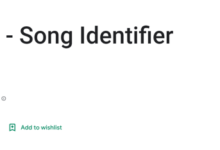A Guide to Deepfake Detection: Differentiating Between Real & Fake

The technology has advanced to this that manipulatively created synthetic media of the targeted individuals are disseminated over the internet for multiple purposes. This synthetic media, better known as deepfakes, is created using advanced technology, making it hard to distinguish between real and fake identities. The fabricated identities appear highly convincing and legitimate that even advanced biometric authentications systems fail to flag the fabricated identities. Cybercriminals use deepfake attacks to spread false information, promote fake advertisements, exploit the societal image of the victim, or manipulate people’s perceptions. Most of them are created to spread pornographic content and mostly women are the victim of porn deepfakes.
Highly sophisticated deepfakes are created by using artificial intelligence and machine learning, blurring the boundary between real and fake faces. It’s crucial to develop AI deepfake detection to effectively detect and mitigate AI-generated deepfakes.
Breakdown of Deepfake Creation
Creating convincing and highly realistic requires technical expertise and better use of advanced technology. Cyber fraudsters have become sophisticated with advanced technology and discovered avenues to support their nefarious activities. Deepfakes are often created by using face morphing technology, however, multiple advanced technologies are employed to produce sharp output.
- The first step of deepfake creation includes the collection of a large volume of images or videos of the targeted person. The more the facial data, the better the realistic synthetic media. This collected data is assumed to be superimposed on the targeted image or video available on the internet.
- Deep learning neural networks are trained on a vast volume of identities to make them able to generate convincing and natural results. A type of deep learning, generative adversarial networks (GANs) are predominantly used for deepfake creation. It consists of two parts, generators and discriminators. The generates creates the selected faces, while the discriminator finds the differentiates between the real and fake identities. This process is continued until the discriminators fail to recognize the difference between the fabricated identity and the genuine person.
- The manipulatively generated face is swapped with the targeted person in the image or video. Further refinements and improvements are made to create convincing results.
Warning Signs for Deepfake Prevention.
The desired images or videos are created without consent and disseminated over the internet for nefarious purposes. Deepfakes present a growing risk to the integrity of digital persona, making it challenging for online users to tell apart who is real and what is fake. Considering the potential threats, it’s essential to establish deepfake detection online to create a safe online community.
Inconsistent Lightning & Shadow Discrepancies
Whenever you see an online video, look for inconsistencies, and don’t just trust whatever you see. Fabricated videos often contain inconsistent lightning and shadows appear unnatural. If shadows or lightning of the face doesn’t precisely match the background, it’s a big indicator of deepfake.
Unnatural Eye Movements
It’s always better to confirm the credibility of the digital content to be wary of sophisticated deepfakes. To differentiate between real and fake content, minutely observe the eye movements and look for inconsistencies. As everyone knows, humans blink frequently and naturally, deepfakes lack this humanistic approach and present anomalies in blinking patterns. In addition, if the eyes of the person in the video are moving in the wrong direction and don’t sync with head movements, it’s a clear warning sign of synthetic media.
Anomalies in Facial Features & Blurred Edges
Genuine human faces present a smooth face geometry and facial features are properly aligned. To discern real and fake identities, crucially analyze the facial features of the present person. Human skin contains subtle variations in skin texture and tone, while deepfakes contain overly smooth skin without any subtle variations, giving the biggest difference and enabling users to discern precisely.
Conflicting Audio-Visual Sync
Inconsistent or unnatural audio-video sync is a potential red flag, allowing users and authentication systems to promptly tell apart fake video. Be watchful pay attention to lip movements and check if the lip movements are synchronized with the spoken words. Further, a differentiating audio and video quality indicates the presence of deepfakes.
Blurred Background
Pay attention to the video and check if the background is clear and the objects or people behind the video are focused. If the background objects seem to appear and disappear at random points or time gaps, report the video promptly, it’s a scam.
Anomolous Body Movements
The human body presents natural movements or remains consistent, while in deepfake video the body movements of the presented identity are inconsistent and unnatural. Be wary and watch out for the signs of deepfakes to clearly distinguish between real and fabricated identities.
Final Thoughts
Deepfakes present significant risks to the integrity of the digital world and threaten the privacy of information on online platforms. Nobody is protected against the rising threats of AI deepfakes. To stay ahead of the curve and safeguard digital persons it’s crucial to stick to robust deepfakes detection measures and guidelines.





